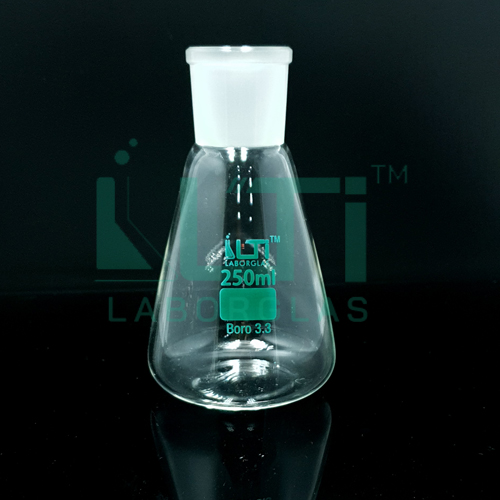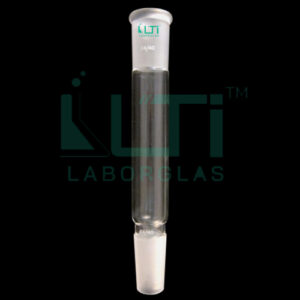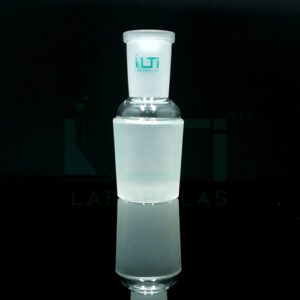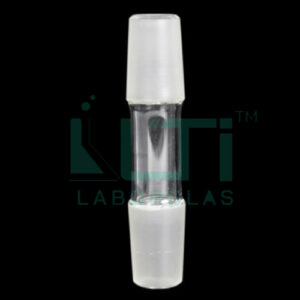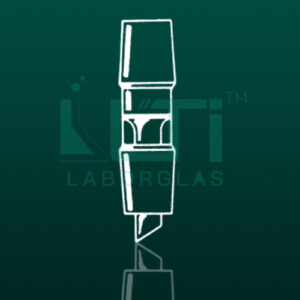- Made from ASTM E-438 Type-1 Class A, Boro 3.3 glass
- These Flasks comes with Ground Joint manufactured as per ASTM E-1404, Type 2, Class-1 requirement
- The Flasks are printed in white colour enamel
| PART No. | Capacity (ml) | Joint Size | PACK Qty. |
| 5390-10 | 10 | 14/20 | 2 |
| 5390-25 | 25 | 14/20 | 2 |
| 5390-50 | 50 | 14/20 | 2 |
| 5390-50-A | 50 | 19/38 | 2 |
| 5390-50-B | 50 | 24/40 | 2 |
| 5390-125 | 125 | 19/22 | 2 |
| 5390-125-A | 125 | 24/40 | 2 |
| 5390-250 | 250 | 24/40 | 2 |
| 5390-300 | 300 | 24/40 | 2 |
| 5390-500 | 500 | 24/40 | 2 |
| 5390-1000 | 1000 | 24/40 | 1 |
| 5390-2000 | 2000 | 24/40 | 1 |
Here are some common uses:
- Refluxing Reactions:
- The flask with a joint is often used in refluxing setups where a condenser or other apparatus can be attached to the joint. This is useful for reactions that require continuous refluxing of the reaction mixture.
- Distillation:
- Erlenmeyer flasks with joints are employed in distillation setups. The joint allows for the attachment of a distillation head, condenser, or other distillation apparatus for separating components based on their boiling points.
- Fractional Distillation:
- For more precise separation of components, the flask with a joint can be used in fractional distillation setups. This is common in purifying liquids or separating components with close boiling points.
- Vacuum Filtration:
- The joint on the Erlenmeyer flask allows for the attachment of a vacuum source and filtration apparatus. This is useful for separating solids from liquids under reduced pressure.
- Chemical Synthesis:
- Erlenmeyer flasks with joints are utilized in various chemical synthesis processes where additional apparatus, such as condensers or reflux systems, is required.
- Heating with Attachments:
- The joint allows for the attachment of heating mantles or other heating devices for controlled and uniform heating of the flask contents.
- Solvent Evaporation:
- In setups where solvent evaporation is needed, the joint on the flask allows for the attachment of a condenser or other apparatus to collect and condense evaporated solvents.
- Pressure Reactions:
- The joint can be useful in setups where pressure reactions are conducted. It allows for the attachment of pressure-equalizing additions or monitoring devices.
- Synthesis and Reaction Monitoring:
- Erlenmeyer flasks with joints are used in synthetic chemistry and reaction monitoring where additional monitoring equipment or sensors can be attached to the joint.
- Customized Setups:
- The presence of a joint adds versatility, allowing scientists to create customized experimental setups by attaching various glassware or equipment as needed for specific experiments.

